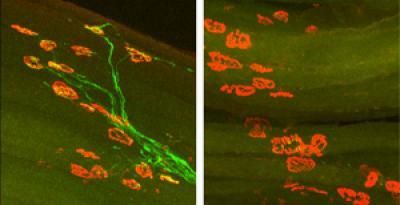
© GreenMedInfo
In a groundbreaking study published in the journal
Analytical and Bioanalytical Chemistry last year, evidence surfaced that
glyphosate, the active ingredient in the Monsanto's patented herbicide Roundup, is flowing freely into the groundwater in areas where it is being applied.
1 The researchers found that 41% of the 140 groundwater samples taken from Catalonia Spain, had levels
beyond the limit of quantification - indicating that, despite the manufacturer's claims, glyphosate herbicide
does not break down rapidly in the environment, and is accumulating there in concerning quantities.
Why Is Groundwater Contamination An Important Finding?Groundwater is water located beneath the ground surface, that supplies aquifers, wells and springs. If a chemical like glyphosate is mobile enough to get into the groundwater and is intrinsically resistant to being biodegraded (after all, it is being used to kill/degrade living things - not the other way around), significant environmental exposures to humans using the water are inevitable. After all,
according to the USGS, 88,000 tons were used in the US in 2007 alone.
Keep in mind that glyphosate is considered by the EPA as a Class III
toxic substance, fatal to an adult at 30 grams, and has been linked to over 20 adverse health effects in the peer-reviewed, biomedical literature.
This groundwater contamination study adds to another highly concerning finding from March, 2011, published in the journal
Environmental Toxicology and Chemistry, where researchers found the chemical in 60-100% of all air and rain samples tested, indicating that
glyphosate pollution and exposure is now omnipresent in the US. When
simply breathing makes you susceptible to glyphosate exposure, we know we are dealing with a problem of unprecedented scale.
In fact, glyphosate's broad spectrum toxicity has been identified to be one potential cause for the disturbing loss of indispensable food-starter bacteria from soils and
cultured foods within certain regions of the world, indicating that GMO farming may be depleting the
microbial biodiversity of the soil, and ultimately its ability to remain fertile.













Comment: Environmental Working Group Says: 'Dirty dozen' Produce Carries More Pesticide Residue
It's not all white: The cocktail of up to 20 chemicals in a glass of milk
Toxicity tests for chemicals: If only we all had EFSA's crystal ball
Research Links Pesticides with ADHD in Children
Organic Foods Offer Alternative to Foods Containing Food Dyes & Pesticides Linked to Raising Children's Risk of ADHD
Fresh Produce Often Contaminated with Pesticides